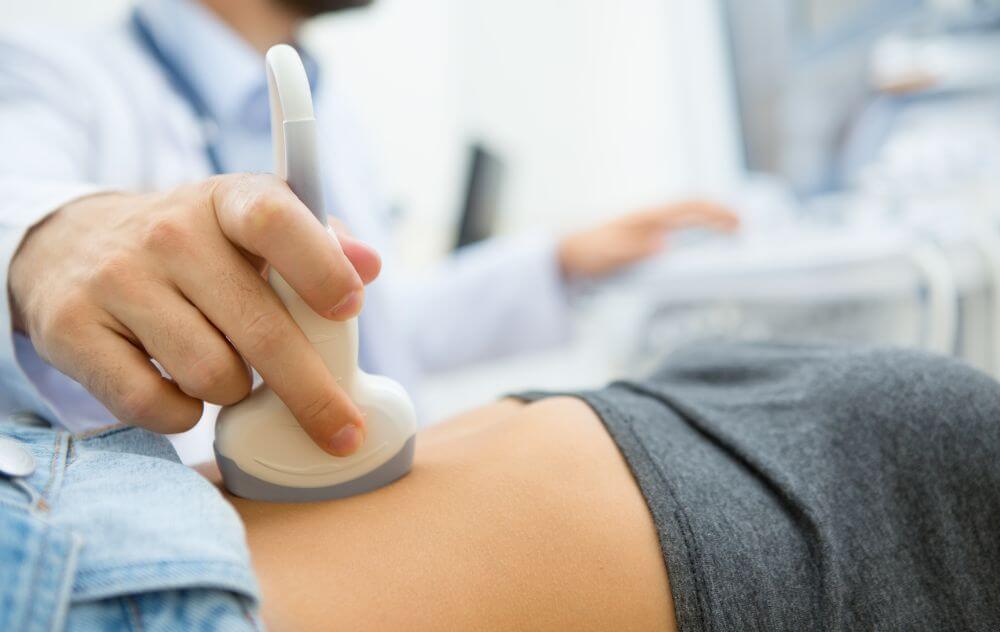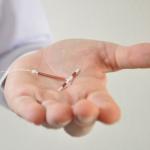
Are You Wondering How to Diagnose Uterine Fibroids?
Uterine fibroids are growths found either inside the uterus or attached to the outer walls. These growths are benign, but they can grow large enough to cause issues with fertility and problems with other organs. They are often found during a routine pelvic exam, though the doctor may order additional tests to confirm the diagnosis.
You may experience some symptoms of uterine fibroids that prompt you to talk to your doctor. Some of the symptoms of fibroids include:
- Heavy bleeding
- Prolonged periods
- Irregular periods
- Severe cramping
If you experience these symptoms or other issues that make you think you may have fibroids, schedule an appointment with one of our fibroid specialists for a diagnosis and treatment recommendation.
Many women wonder how fibroids are detected. While your doctor may be able to detect fibroids from a simple pelvic exam, there are a number of tests that can provide a more accurate diagnosis. Your doctor may order any of these, though some are more common than others for diagnosing fibroids.
Fibroid Diagnostic Methods
Diagnosing uterine fibroids typically involves a combination of methods, including pelvic examination, imaging tests, and sometimes blood tests. Among these, ultrasound imaging is one of the most commonly used and effective tools.
Magnetic Resonance Imaging (MRI)
Next to an ultrasound, an MRI is the most common test for an accurate uterine fibroids’ diagnosis. This procedure provides more detail than an ultrasound. The doctor may choose to order an MRI for women nearing menopause or who have a larger uterus.
Ultrasound
An ultrasound is often the first test chosen by a doctor for a fibroid diagnosis, as it is non-invasive and requires virtually no preparation by the patient. This test uses sound waves to create an image of the uterus that displays fibroids as light or dark shapes. The ultrasound allows the doctor to measure the size and location of the fibroids and recommend treatment.
Why an Ultrasound?
Ultrasound, also known as sonography, utilizes sound waves to produce images of internal body structures. It is a non-invasive, painless procedure that offers real-time imaging without exposing the patient to ionizing radiation, making it safe for repeated use, if necessary.
Transabdominal Ultrasound
In transabdominal ultrasound, a technician applies a water-based gel to the abdomen and moves a handheld device called a transducer over the skin. This device emits high-frequency sound waves that bounce off internal structures, creating images on a monitor. Transabdominal ultrasound is useful for assessing the size, shape, and location of fibroids, especially larger ones.
Transvaginal Ultrasound
Transvaginal ultrasound involves inserting a slender, wand-like transducer into the vagina. This method provides a closer and clearer view of the uterus and ovaries, allowing for better visualization of smaller fibroids and those located near the uterine lining.
Advantages of Ultrasound in Fibroid Diagnosis
- Non-invasive: Ultrasound imaging does not require any incisions or injections, making it comfortable and safe for patients.
- Real-time imaging: Ultrasound provides immediate images, allowing clinicians to assess fibroids and any associated abnormalities promptly.
- No radiation exposure: Unlike some other imaging techniques like computed tomography (CT) scans or X-rays, ultrasound does not expose patients to ionizing radiation, making it a preferred choice, especially for pregnant women or those requiring repeated imaging.
- Cost-effective: Ultrasound is relatively inexpensive compared to other imaging modalities, making it more accessible for routine screening and follow-up exams.
Best Way to Diagnose Fibroids
If you suspect that you may have fibroids, schedule a consultation by one of our experienced fibroid specialists. While your OB-GYN may suggest treatment, a fibroid specialist will have more insight on the best path forward for your situation. If any potential fibroids are found, an ultrasound imaging test will likely be used to confirm the diagnosis. A MRI may be ordered to determine more detailed information, such as the location, number, and size of any fibroids.
Once you have been diagnosed with fibroids, you can seek minimally invasive treatment with uterine fibroid embolization (UFE). UFE is a non-surgical procedure that uses a tiny catheter inserted into the thigh or wrist to deliver embolic agents into the arteries that supply blood to the fibroid. This blocks the flow of blood, allowing the fibroid to shrink and die.
This procedure is performed in an outpatient setting and is a less invasive treatment than a hysterectomy or myomectomy, allowing you to go home the same day. Recovery time is one to two weeks with minimal side effects. Over 90 percent of patients with fibroids who have UFE report relief from their symptoms.
Visit USA Fibroid Centers for Fibroid Treatment
At USA Fibroid Centers, our state-of-the-art treatment centers provide the support you need to deal with fibroids. Our accredited fibroid specialists are experienced in UFE and will help you get the treatment you need that can reduce and eliminate uncomfortable symptoms.
With over 40 locations around the country, finding a clinic near you is simple. Contact us at 855.615.2555 to schedule an appointment to learn more about UFE.



